A Sommelier's wine secrets
Menu
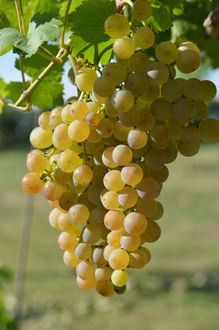 So you’ve fallen in love with that new find, a trendy Pink Moscato wine that you found on the grocery store shelf with a sticker that says it’s only $5.99. You’d be surprised to know that Moscato is actually one of the oldest domesticated grapes in the world with a long, luscious history. Moscato, Moscatel and Moscadello grapes are all derived from the same geographically diverse, easy growing ancient grape varietal, Muscat. The Egyptians and Persians were onto the fact that Muscat was a fabulous, quaffable deck wine as far back as 3,000 – 1,000 BC. There are four principal varieties of Muscat, in differing berry hues and intensities, which include Muscat Hamburg, Muscat of Alexandria, Muscat Blanc A Petits Grains (literally means small berries) and Muscat Ottonel. To make this simple fact more confusing the name of the growing region is added to the grape name, while others, the name is altered slightly based on the location. For example Moscato di Asti (Italy) Muscat d’ Alsace (Austria), Moscatel (Spain), Muskateller (Germany) Tamaioasa Alba (Romania) Tokaji (Hungary), Muscat de Beaumes-de-Venise (Loire), Muscat du Cap Corse (Corsica) and many, many more. The Muscat grape lends itself to various wine-making styles and techniques unique to each wine region, so some Muscat wines can be mass produced (Pink Moscato of California), light and fizzy (Moscato di Asti - Italy), dry still wines (Muscat de Beaumes-de-Venise - Loire) and also viscous, decadently sweet wine (Tokaji - Hungary). Despite the numerous sobriquets and variety of styles, it doesn’t seem to matter where the grapes is grown or how the wine is made, but there is a universal love for Muscat.  White Zinfandel wine is usually a popular choice among people who would not otherwise drink wine or are just starting to experiment with drinking wine. White Zinfandel is known to be quaffable and easy to drink for it possesses low alcohol, bold fruit and sweetness. Novice wine drinkers usually prefer these light, sweet, fruity wines to the stronger, more astringent reds. This is why White Zinfandel is considered a starter wine; a wine with training wheels. In Napa during the late 1800’s, Zinfandel grapes were commonly used in the production of Rosé wine. The lightly colored free-run, or initial juice from the processed grapes, was collected and fermented into a dry, almost white wine, thus called “White Zinfandel”. However, in 1975, while producing Rosé, the Sutter Home Winery experienced a problematic, stuck fermentation, which happens when the yeast die before consuming all of the sugar. Not knowing what to do with this sweetly flawed wine, Sutter Home bottled it in a jug and sold it at a roadside stand. This was the beginning of the sweet White Zinfandel frenzy which soon caught on throughout the United States. Today, sales of White Zinfandel account for 10% of all wine sold by volume in the U.S. Nothing short of a marketing miracle. When in doubt what to do with bad wine, make it sweet.  Dom Perignon didn’t do it, Madam Clicquot didn’t do it, it was the British that did it. I know it hurts, but the British should actually get credit for creating Champagne. For decades people have assumed that the French were the inventors of Champagne. However, the first ever-documented mention of champagne in any language was from an English text in 1676, which claims the English used to import French wines in casks and then add sugar and molasses to create champagne (The Champagne Shop, 2002). Even worse, the British produced stronger, more durable glass bottles to withstand the pressure which is created by the champagne. And, the final straw, the British rediscovered the use of cork in Champagne bottles before the French, since cork had been used in England since Roman times. So, where was Monsieur Perignon when all of this was happening? It appears while Britain was advancing their champagne production techniques, Dom Pérignon. was busy trying to remove the bubbles from his wine, thinking that they were a flaw. And Madame Clicquot was desperately trying to remove the yucky stuff that settled to the bottom of the champagne bottle. The next time you’re enjoying a great glass of Champagne you can blame the British. 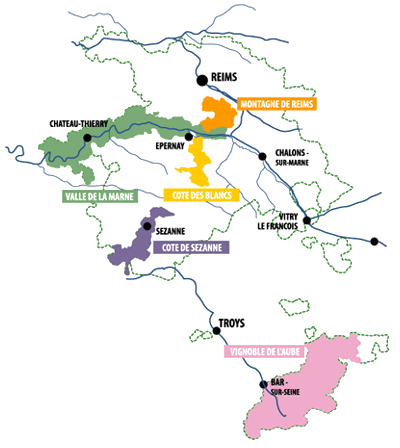 The French wine growing region of Champagne is often perceived as one specific area which produces some awesome spritzy wine. However, if you look a little closer you will notice that the region of Champagne is actually made up of five distinctive sub-regions which possess their own unique characteristics and soil types. The irony of this is that the uniqueness of each sub-region is negated by the tradition of blending various grapes from different regions to make the wine. To make matters worse, the region of Champagne is dominated by a few very large producers, known as Champagne houses, which sell their blended wine under one brand name. Champagne wine is sold by house style and image instead of the unique and distinctive “terrior” of the region. The five sub-regions of Champagne are Vallée de la Marne where the Pinot Meunier grape is dominant and thrives in the clay and sand deposits. Montagne de Reims has classic, chalky soils dominated by Pinot noir. Chardonnay is the prevalent grape in the Côte des Blancs, where the grapes love the chalk, sand and clay of the southeast facing slopes. Côte de Sézanne contains both Chardonnay and Pinot noir. Finally, Côte des Bars (also known as Aube) possesses Kimmeridgean soil that is like heaven to a Pinot noir grape. So the next time you’re drinking Grand Cru Champagne, don’t think about the flavors of the fruit and yeast, think about the mystery of the region that is an essential part of the wine.  Since there seem to be so many Thanksgiving Dinner wine recommendations, I can’t help but to add my own. After decades of laborious research, drinking and eating. I’ve come to the conclusion that there is no one single wine that goes with Thanksgiving Dinner. My recommendation is simply to have a variety of different wines. So, name your wine. You could have Chardonnay, Viognier, Aligoté, Gamay, Cabernet, Mourvèdre, Sangiovese or Meunier. They’re all okay. As far as pairing wine with thanksgiving dinner, the only real culinary faux pas would be to not have quantité. Gard Vintners 2012 Cabernet Sauvignon (Columbia Valley) - Vanilla and dark cherry flavors saturate your palate then give way to secondary flavors of sweet tobacco, black pepper, violet and rosemary. The tannins are impressive and create a long, following finish.
I was stunned during my Sommelier training to learn how much the taste and characteristics of wine are influenced by the soil in which the vines are grown. As the vine roots burrow through the earth, they absorb the mineral characteristics of each soil-type or rock layer they penetrate. Rieslings from Germany are notorious for their slate-like taste derived from the layers of native slate between loose soil. The Terra Rossa soil (clay overlying limestone) found in the Coonawarra region of Australia gives the Cabernet Sauvignon produced there a distinctive, earthy, spicy characteristic. The same is true for the flinty tasting French Chardonnays from the Puligney-Montrachet region, whose roots are deeply entrenched in layers of flint rock.
Oregon wines also possess a regional taste. More specifically, the Willamette Valley possesses a variety of soil types from the various floods, volcanic activity and ocean sediment that has accumulated throughout the passage of millions of years. Each sub-region of the Willamette Valley has its own unique tastes and characterists particular to that individual locale. The red, silt, clay Basalt soils surrounding Dundee create earthy, truffle-like spices and red fruit notes in their Pinot noirs. Yamhill, McMinnville, Chehalem and Ribbon Ridge AVAs contain an ocean sedimentary soil which creates wines that possess black fruit, brown spices, tobacco and chocolate. The Eola Hills are composed of purely volcanic soils and produce a Pinot with notes of dark fruit, spice and mineral. The next time you enjoy a glass of wine, you may attribute the flavors you detect to the winemaker or varietal of grape, but it is actually the soil that deserves the credit for the experience. 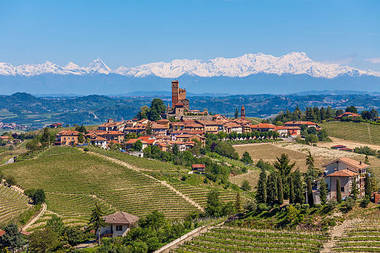 The wine-producing region of Piedmont, often called the “Burgundy of Italy,” is one of the most viticulturally versatile areas in the world. Located in the foothills of the Alps in Northwest Italy, Piedmont consists of 142,000 acres of vineyards. The region produces 7 wines that have received the highest distinction of quality, DOCG status*. There are also 44 DOC wines* with styles ranging from lightly, delicate whites like Moscato to the viscous and velvety Nebbiolo. The seven DOCG wines in this region consist of Asti, Gavi, Brachetto d’ Acqui, Barbaresco, Barolo, Gattenara and Ghemme. Only the first two are white and the latter four all contain the Nebbiolo grape. In fact, both Barbaresco and Borolo only contain Nebbiolo, with the difference in style being a reflection of the variances in the climate and soil. The forty-four DOCs include Barbera d’Alba, Barbera d’Asti, Carema, Dolcetto d’ Alba, Erbuance di Caluso, Langhe, Monferrato, and Nebbiolo d’ Alba.
Some of the best wines in the world, including one of my favorites, Barolo, come from Piedmont. If you are not familiar with these wines, I would encourage you to sample the distinctive and diverse wines from this region. * In Italy, wines are demarcated according to their consistency and quality by one of four designations - Denominazione di Origine Controllata e Garantita (DOCG), Denominazione di Origine Controllata (DOC), Indicazione Geografica Tipica (IGT) and Vini da tavola. DOCG is the highest designation, signifying wines of the best quality and consistency. DOC status is granted upon wines of very high quality, though not quite to the level of the DOCG wines. |
Annette Solomon, CS
CategoriesArchives
December 2021
|
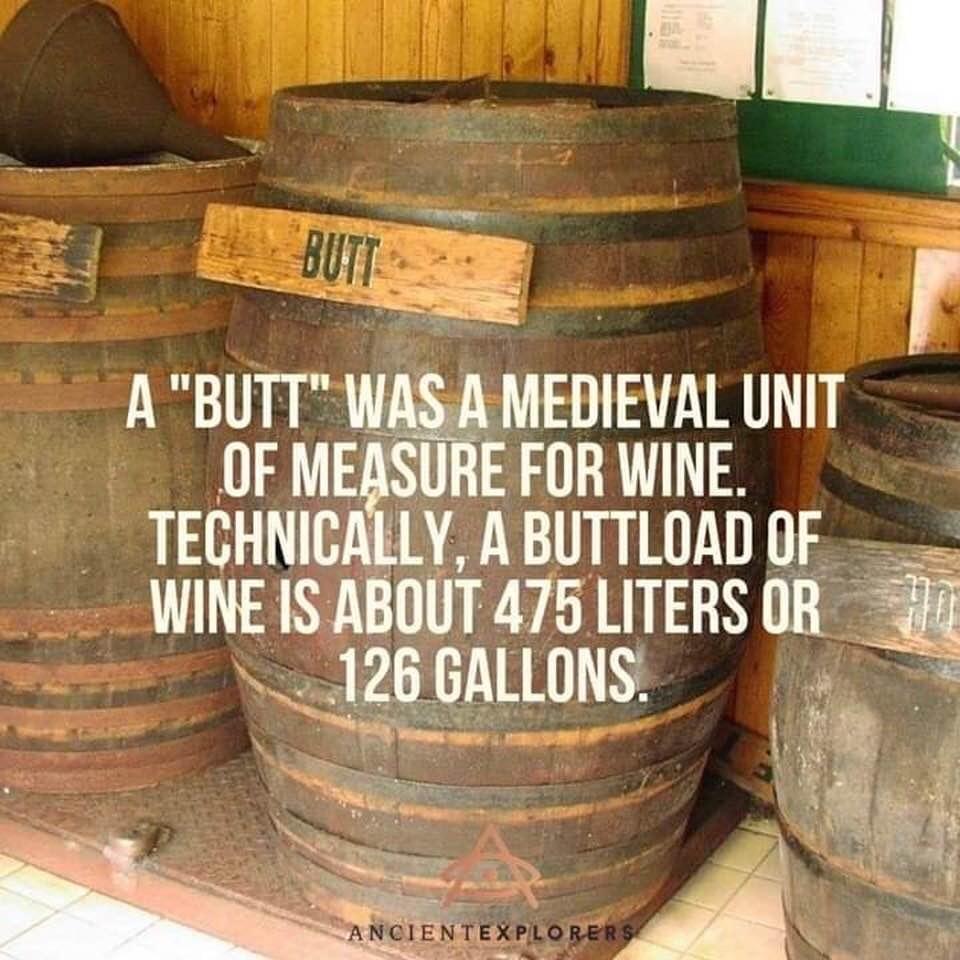

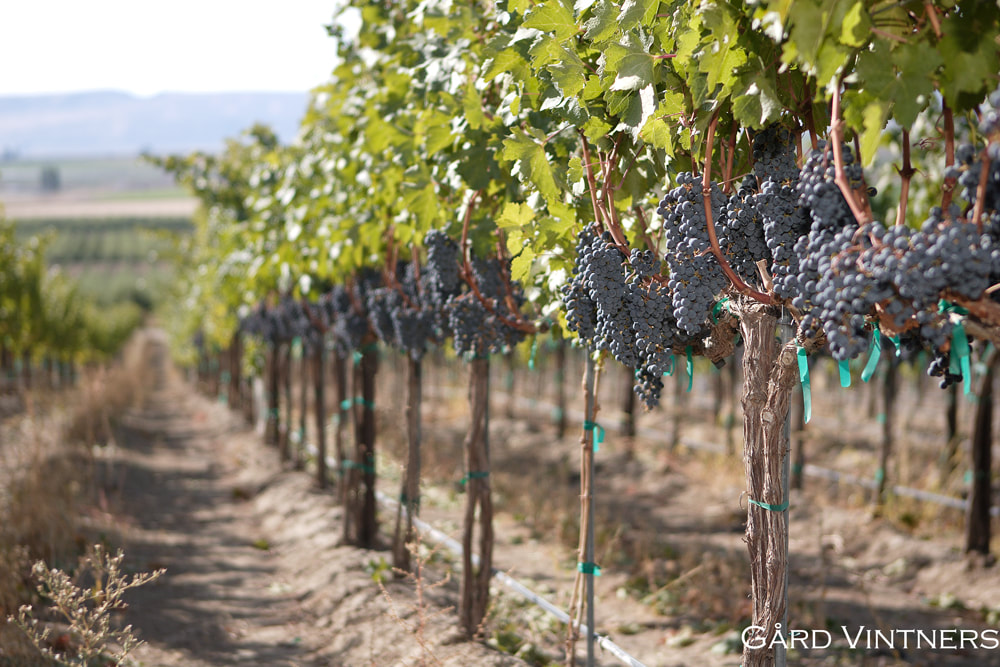


 RSS Feed
RSS Feed
